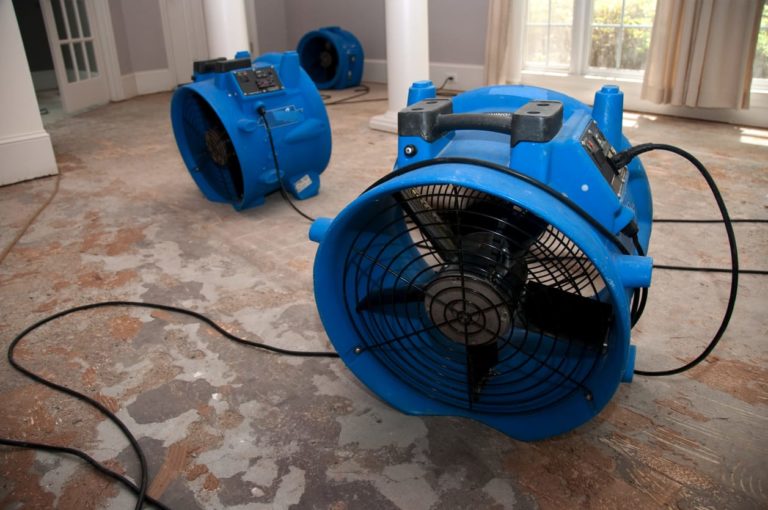What Do I Do If My House Floods?
Know what to do before, during, and after a flood with our home flooding resources and consider a water leak sensor to let you know the moment a potential problem starts. We’ve also found the best sump pumps if you’ve got to get water out of your home.
The basics of what to do after a flood include the following:
- Stop the water at its source.
- Turn off the electricity (only if you can do so without stepping into water).
- Evacuate the premises.
You’ll also need to contact your insurer (or your landlord, if you rent), document everything, and then clean up to prevent further damage from mold.
A flooded home can be the result of external events—such as extreme weather—or internal issues, including plumbing failures. No matter what the source of water is, there are steps you must take to protect your family, save your home, prevent health hazards, and recoup as much of the cost of repairs as possible from your insurer.

By signing up, you agree to our Terms and Conditions and Privacy Policy.
1. Stop the water at its source
Unless the flooding is due to an act of nature, find the source of the water and turn it off or seal it up. The easiest way to stop water flow is to turn off the main water valve to the house. If possible, locate the valve before it floods so you can find it easily in case of a water emergency.
3. Evacuate the premises
If a burst pipe or sewage leak is the issue, evacuate the premises and find a dry, safe spot outside of your home. It may be as close as the backyard or as far as the home of a neighbor or friend. Make sure that everyone—kids, pets, friends who may have been at the house—is accounted for and unhurt.
In the case of a natural disaster, locate a temporary shelter, either by asking authorities or listening to the local news. Get everyone relocated to the shelter as soon as possible.
4. Call for help
Once your family members—both two-legged and four-legged—are on dry ground, call for help. If anyone needs medical attention, call 911. No matter what’s going on with the flooded house, the damage has already been done, and your focus simply must be on you and your loved ones’ well-being.After you’ve verified that everyone is safe and well, you can make calls to the proper parties to get the recovery process underway.
Renters: Call Your Landlord
As soon as you and everyone who lives in the home are safe, let your landlord know what’s happened. (Now is a great time to make sure that your landlord’s number is in your cellphone and also written down and stored in your car’s glove compartment.)
Homeowners: Call Your Insurer
Call your insurer and explain that your home has suffered water damage. Make sure to clarify whether you need to wait for an adjuster to visit your home before you begin the cleanup and repair processes.
5. Document everything
When thinking about what to do if your house floods, the first thing that probably comes to mind is cleaning up the mess. But before you do, document everything so you can show your insurer the extent of the damage. Use your cellphone camera to film or photograph all aspects of the issue.
The water that’s flooding your home may include sewage or other hazardous material, so you need to take extreme precautions to not touch it. Before going into the home, suit up with appropriate protective gear, such as waders and waterproof boots.
6. Start the cleanup process
Cleaning up after a flood is a long, arduous process. You’ll need to remove the water, salvage any personal items you can, dry the space out, and disinfect any areas or objects the water touched. And, as in the previous step, you’ll need to undertake these tasks while wearing proper safety gear to avoid contact with bacteria.
The Red Cross has prepared a manual to guide you through these steps. If you’re not dealing with a flood situation right now, printing this document and reviewing it to make sure you have adequate supplies on hand is a smart step toward preparing for that possibility.
7. Prevent mold damage
Aside from the immediate loss of personal property to water damage, there is secondary damage to consider. Mold is a huge problem after a flood—and not just the type of mold that you might find in a damp basement. Toxic mold or black mold can have long-term effects on your health.
To avoid mold issues, you’ll need to do two things: keep areas that flooded as dry as possible and treat potential problem areas with a strong cleaner, like a bleach solution. FEMA also has some helpful instructions on dealing with mold and mildew after your home floods.
Flooding can happen anywhere—so be prepared
When it comes to flooding, Mother Nature has not been kind during the past few years. Millions of homes across America are affected by urban flooding due to increased rains and the resulting overflow from rivers, streams, and coastal areas.
But Americans face another type of emergency flooding—from inside their homes. The most common cause of water damage comes from failed plumbing systems: the materials wear out, leading to pipe leaks or bursts.
These types of incidents can cost you anywhere from $1,100 to $4,500 on average, and more extensive repairs can rack up tens of thousands of dollars. Water damage is destructive and expensive, and it can have long-term consequences for your health and the value of your property.
Fortunately, there are some precautions you can take to protect your home from the ravages of floods:
- Use water leak sensors to get early warning of unwanted water.
- Install a smart home security system that includes flood detection.
- Get a sump pump to help prevent water damage and cleanup if you have any flooding.
- Use a waterproof safe for valuables and important documents.
Compare the best home security systems
*Google and Google Assistant are trademarks of Google LLC.
Info current as of 04/16/21. Offers and availability may vary by location and are subject to change.
*$0 due up-front with consumer financing.
†No-contract options available with outright equipment purchase.
‡Landline monitoring only. Some restrictions apply. (Full disclaimer)
**With $99 installation charge and new monitoring agreement. Early termination fee applies. See full disclaimer for full offer details, terms, and conditions.
The post What Do I Do If My House Floods? appeared first on SafeWise.
Article source here: What Do I Do If My House Floods?


